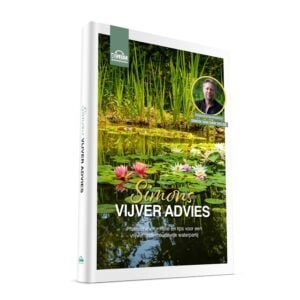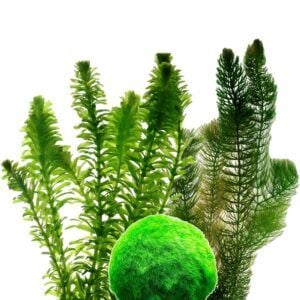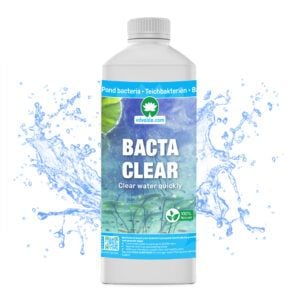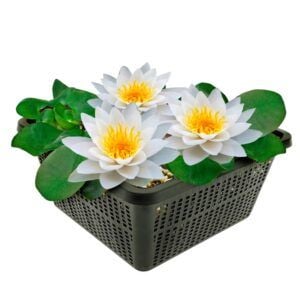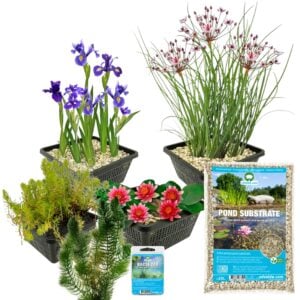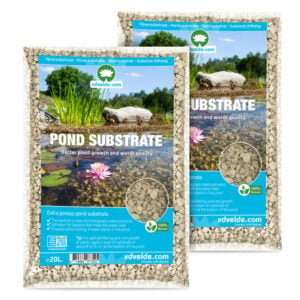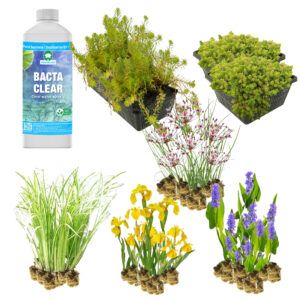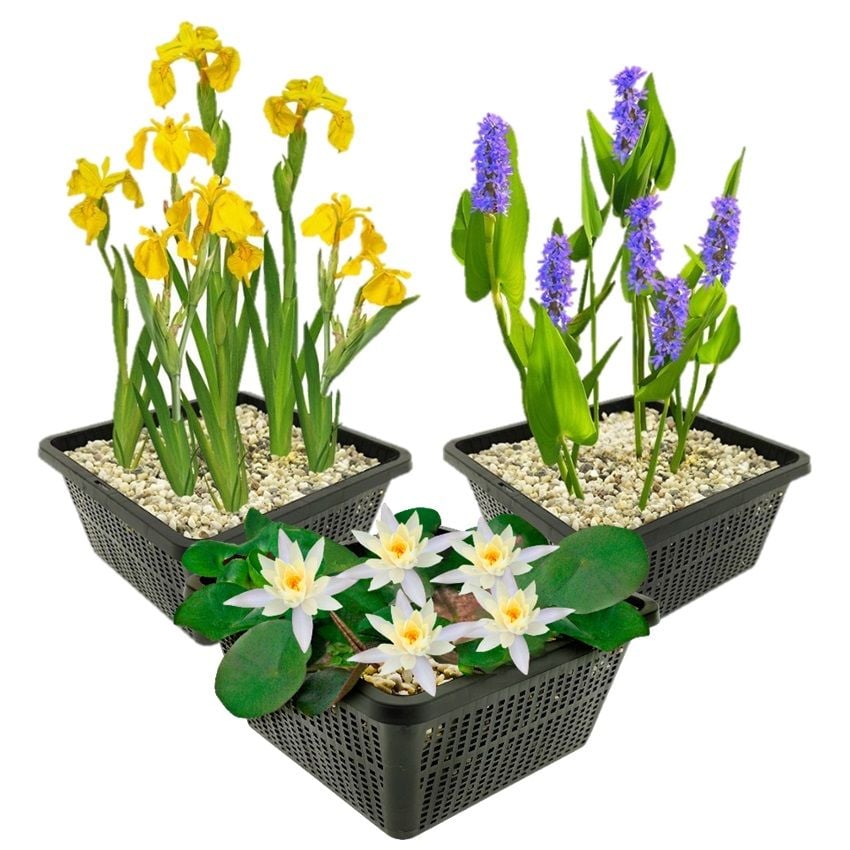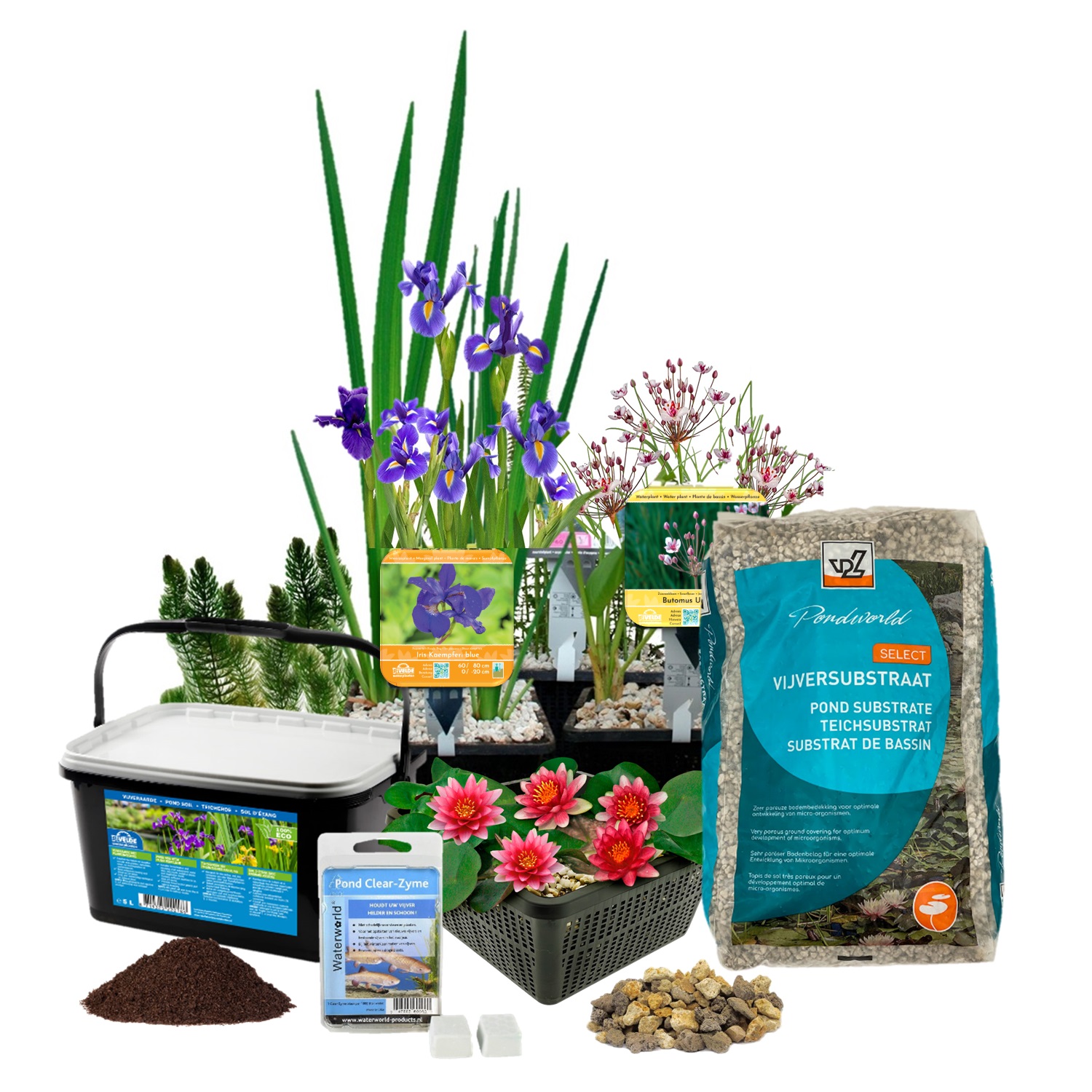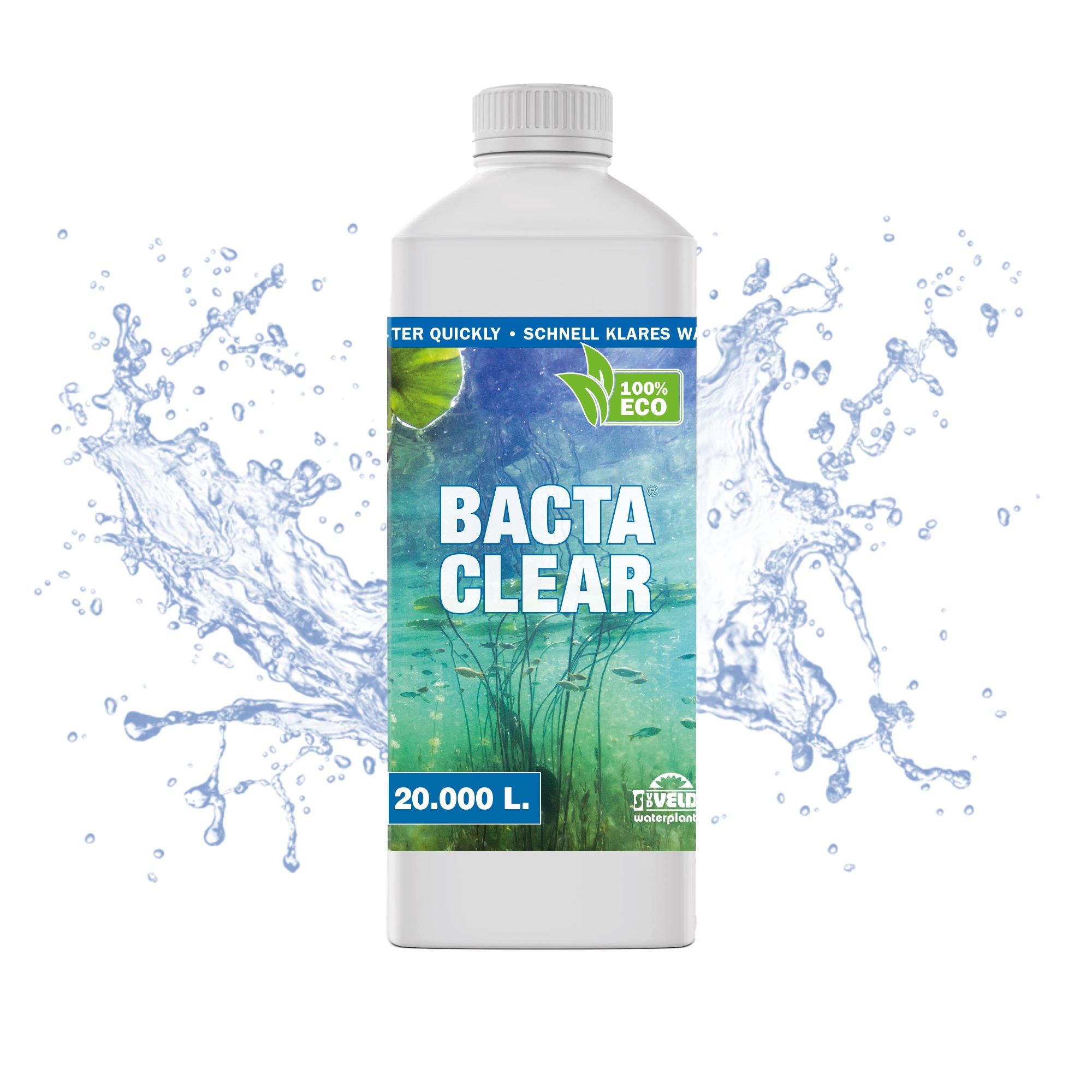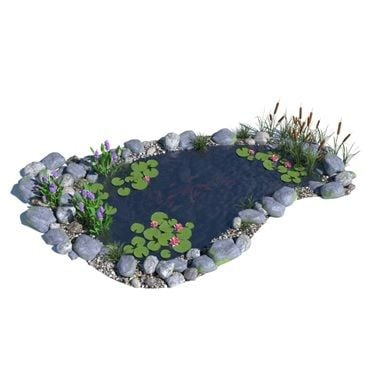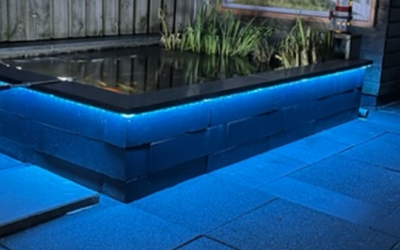
I hope you enjoy reading this blog.
Pond construction tips and preformed pond vs pond liner
Constructing pond box rectangle compared to pond liner EPDM and why liner is a better alternative than a pre-formed pond box.
What is a preformed pond tank?
A pre-formed pond is a pond that is already pre-formed and made of durable material such as plastic, rubber or fiberglass. These ponds are available in a variety of sizes, shapes and depths and usually have a built-in rim already built in, making the construction of the pond relatively easy. Pre-formed pond liners are often used by novice pond enthusiasts because they are easy to install and less labor-intensive than digging and forming a pond in the garden.
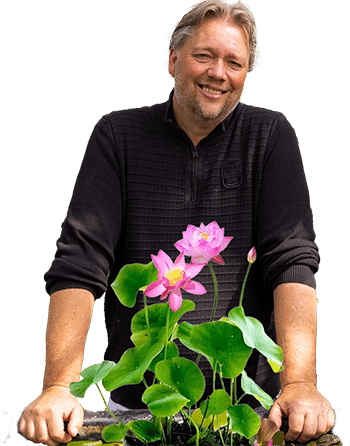
Tips, advice and substantial savings
How deep should a pond tank be?
The ideal depth for a pond tank is between 80 and 100 cm. A natural pond often has a deepest point of 80cm, but this can also be deeper, especially in ponds with fish such as koi, it is not possible to keep these fish in a pond container because pond containers are usually not deeper than -80cm, while a koi needs a minimum depth of -150cm. It is not advisable to choose a pond tank that is less deep than -80cm, as the water will heat up quickly and this can lead to excessive algae formation. This risk is usually greater with a pre-formed pond container compared to an excavated pond. This is because the plastic composition of the pond container attracts heat and the fact that pond containers are often a dark color amplifies this effect.
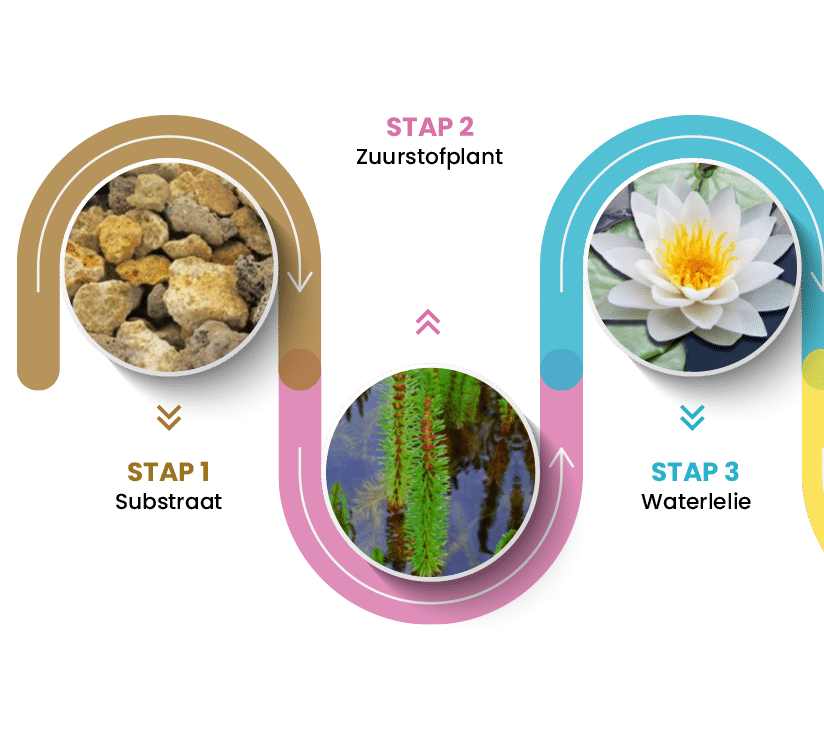
Want a naturally clear pond?
A beautiful pond is easier than you think.
How do I install a pond tank?
Installing a pond tank is easier than it looks. Follow the steps below for a smooth installation.
- Plan your pond: Think carefully about the desired size and shape of your pre-formed pond: small pond, mini pond, large pond or rectangular pond. The size/shape you choose depends largely on your taste. Draw the pond out on paper to have a visual plan of how and where it will be located.
- Site Preparation: Make sure the chosen site is flat and weed-free. Remove excess soil and other obstacles with a shovel or rake.
- Dig a pit: This pit should be about 10 centimeters deeper and wider than your pond container. Place a layer of about 10 centimeters of fine sand at the bottom, such as sheet sand. This ensures that the pond container is slightly elevated when placed and can sink slightly into the sand when filled.
- Position the pond container: Place the pond container centrally in the pit so that there is equal space all around. Make sure the pond container is completely level, otherwise the water may overflow on one side while the other side is not yet filled.
- Add substrate: A 10- to 15-centimeter layer of pond substrate or pond soil on the bottom helps aquatic plants grow, and it provides beneficial pond bacteria a place to nest.
- Fill and Finish: Now add your aquatic plants and fill the pond with water. This is the most important step because the setup determines whether or not you will experience pond problems in the future. Do you want to be sure to set up your pond correctly? Then follow our pond setup step-by-step plan.

How many pond plants per m2 for a rectangular pond container?
According to pond specialist Simon van: Vdvelde.com, a pond is set up correctly if the pond contains: substrate, bacteria and enough pond plants of different species. Our advice is to plant at least 10 to 12 loose oxygen plants per m³ (1000 liters of water) + 2 baskets with 4 plants per m², at least 1 water lily per 0.5 to 3 m², at least 2 baskets with 4 plants (total 8 plants) per 1 m² and at least 2 baskets with 4 plants (total 8 plants) per 1 m². In this way the pond is arranged in such a way that the aquatic plants keep the water balanced independently and completely naturally. Our complete step-by-step plan for setting up the pond correctly can be found here.
What does a pond tank cost?
The cost of an average pond container varies greatly depending on factors such as material, size, shape, brand and quality. When we talk about an "average" pond container, we often mean a medium-sized preformed plastic container suitable for a standard garden. The cost of an average pond liner varies between €100 and €500. The cost of lining an excavated pond with pond liner is between €4 and €10 per square meter. So a pond basin is easier to build, but an excavated pond lined with foil is cheaper and looks more natural.
Round pond container
A round pond tub is a popular design for garden ponds, characterized by its circular shape that provides a natural look. These containers are often made of materials such as plastic or fiberglass, which provides a reasonably long life and resistance to weathering. The uniform shape of a circular pond container allows for even distribution of water pressure, which facilitates maintenance and placement of plants and decorations.
Pond liner vs pond liners
There is a lot involved in building a pond in the garden. It starts with choosing a natural pond that you dig out or the less natural option: the pre-formed pond container. A natural pond is a more economical and natural option than the pond container. Why?
 |  | |
|---|---|---|
Pond Liner | Pond Bin | |
| ✅ Limited | ❌ Regularly | |
| ✅ Multiple years | ❌ Depending on material | |
| ✅ High (adjustable) | ❌ Limited | |
| ✅ Can be cheaper | ❌ Often more expensive | |
| ❌ Requires more preparation | ✅ Easier to install | |
| ✅ More natural appearance | ❌ May look artificial | |
| ❌ Risk of leakage | ✅ Safer | |
| ✅ Environmentally friendly (if properly installed) | ❌ Manufacturing process may impact environment |
Conclusion
Pond liner offers several advantages over a pond liner. First, it provides a more natural and aesthetically pleasing appearance, as the shape and size of the pond can be customized as desired. This offers more flexibility in design and adaptation to a garden's unique characteristics. In addition, although pond liner installation requires a bit more preparation, it is often more economical in the long run, given its durability and ability to repair leaks and damage locally. Pond liner can also be a better choice from an environmental standpoint, as the production of some pond liners can have a higher environmental impact. Finally, if installed properly, pond liner can be safe for fish and other pond inhabitants while promoting biodiversity in the garden.

8 tips on how to make a natural excavated pond
- Freedom in Design: When you dig your own pond, you are not bound by standard shapes. Whether you have a small oval pond or a sleek square pond in mind, the choice is yours. You determine the depth and course of the pond bottom, including areas for aquatic plants.
- Unlimited Dimensions: While pre-formed pond containers have limited dimensions, a self-excavated pond allows you to determine the size and shape completely as you wish. Your imagination is the only limitation.
- Cost-effectiveness: EPDM pond liner is not only durable, but also cost-effective. For a 10,000-liter pond, you're significantly cheaper with foil than with a ready-made pond liner.
- Natural Finish: With pond liner, you can make the edges of the pond blend seamlessly into the garden. Natural stone, plantings and other materials create an organic, natural look.
- Flexible Banks: A self-excavated pond offers the opportunity to allow the banks to slope gradually. This is ideal for installing pond substrate and provides a more natural look.
- Animal-friendly: A foil pond with multiple zones and natural landscaping is more accessible to animals. Whereas pre-formed pond liners often have steep and slippery edges, making it difficult for animals to get out and sometimes leading to drowning, a dug-out pond offers the opportunity to create flatter walls. This makes it easier for animals such as frogs and birds to safely enter and exit the pond.
- Space for Plant Filters: A pond with foil is ideal for installing a plant filter. This creates natural filtration that contributes to clear and healthy pond water.
- Perfect for Koi Carp: Want a koi pond? Then depth is crucial. With foil you can decide how deep your pond will be, with a pre-formed pond container you are dependent on a depth of up to -80cm, which is actually too shallow for Koi's to offer them a pleasant life.
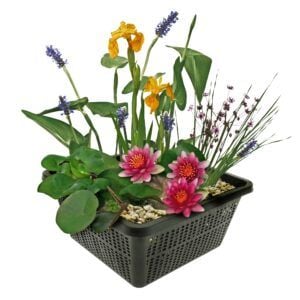

Simon van der Velde
Pond specialist and aquatic plant grower since 1986
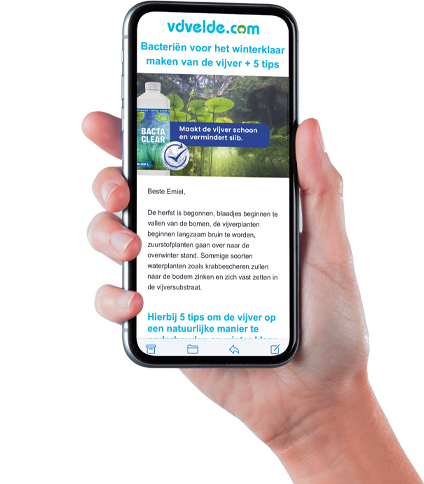
Want to receive the best pond tips all year long, complete with exclusive promotions?
Simons Pond Advice Book
- Choose your language of the book
- Complete pond handbook
- 100+ pages from construction to maintenance
Loose Oxygen Plants Set
- For 500 - 1,000 liters of water
- 16 plants
- Placement: loose in the water
BACTA CLEAR
- For 1,000 to 20,000 L
- 100% eco: clear water fast
- Safe for humans, plants & animals
White Water Lily - Nymphaea Albatross
- Large water lily
- Full-grown height: 10 cm
- Placement: -10 to -100 cm
Complete Pond Package - S - Red
- For 100 - 500 L
- 4 groups of aquatic plants
- Placement: -1 to -100 cm
POND SUBSTRATE Pond substrate - 40 liters
- 40 L covers 1 m² ↥ 10 cm
- Heavy duty quality for the best filtration
- Extra porous: optimal plant growth
Mini Water Lily - Red - Nymphaea Pygmaea Rubra
- Small water lily
- Full-grown height: 5 cm
- Placement: -10 to -40 cm
Complete Pond Package - M - White
- For 500 - 1,500 L
- 4 groups of aquatic plants
- Placement: -1 to -100 cm
Complete Plant Filter Pond Package - M
- For 3 - 4 m²
- 84 plants
- Placement: -1 to -20 cm


